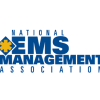Updated June 2015
Improving STEMI care in rural areas will take coordination
While regional systems of STEMI (ST-elevation myocardial infarction) care help patients receive treatment at percutaneous coronary intervention (PCI) centers faster, it’s well known that rural areas lag behind their urban and suburban counterparts in developing these coordinated systems.
To determine the barriers to timely STEMI treatment in rural areas, a team of researchers led by Nick Nudell of PrioriHealth Partners conducted a web-based survey of 65 critical access hospitals in Nebraska. The survey asked about key attributes of regional STEMI systems, such as the availability of 12-leads to EMS, the use of thrombolytics in the hospital, whether hospitals allowed EMS to bypass to a regional STEMI center, and whether hospitals had transfer agreements with STEMI centers. The survey uncovered significant gaps, including:
- 41.5% of hospitals don’t have pre-arranged patient acceptance agreements with regional STEMI centers.
- 70% don’t allow paramedics to bypass their hospital for a regional STEMI center.
- Only 17% of respondents reported that local EMS performs 12-leads; 8% said EMS interprets 12-leads; 3% reported EMS transmits ECG results to the hospital during the call; and one hospital reported EMS transmits 12-lead results to a regional STEMI center for interpretation.
While nearly all hospitals have the ability to give thrombolytic therapy, that decision is often left up to the cardiologist on call, and a “significant number” of patients are transferred to a PCI center without the therapy.
Some hospitals do not consider a prehospital 12-lead diagnostic and repeat it at the hospital, delaying treatment.
Current recommendations call for STEMI patients to receive treatment at a cath lab within 90 minutes of first medical contact. In rural areas, long travel distances and relatively few ALS ambulances pose challenges in meeting those guidelines, Nudell says. Still, rural services could work toward improvements in several key areas.
The first is equipping BLS ambulances with 12-leads that can be transmitted to physicians at the hospital to interpret. “It’s becoming more accepted that EMTs are qualified with the proper training to attach a 12-lead and push the button to have the computer read the 12-lead and transmit it for interpretation,” Nudell says.
Another is using telemedicine to provide clinical support to rural hospitals. “When you take care of a large number of patients with the same kind of condition, you get very good at treating patients with that condition. In the rural areas, call volume is lower. The paramedics, nurses, doctors and the whole health care system are a lot less experienced at treating STEMI patients,” Nudell says. “By working with regional centers that have a lot more experience, they can really raise the standard of care in those rural communities. You’re not going to be able to bring the cath lab to the little town, but you can do the best that you can for the patient out there in the rural area by establishing regionalized systems of care.”
Other recommendations for improving STEMI care in rural areas include:
- Changing protocols to decrease unnecessary delays in transferring patients from the rural hospital to a PCI center, such as requiring blood tests to confirm STEMI before transfer.
- Developing statewide protocols for transferring STEMI patients to PCI centers. The protocols would establish a standardized approach for quickly diagnosing STEMI and getting patients to PCI centers.
- Establishing statewide registries to track STEMI patients and conduct quality improvement.
- Seeking charitable or grant funding to pay for 12-leads.
- Bringing together multiple organizations, including physicians, nurses and EMS, to build political support for regionalized STEMI care systems.
The Rural Acute Myocardial Infarction Survey was published in the February issue of International Paramedic Practice. Funding was provided by the Nebraska Department of Rural Health.
Kirkwood named Durham County EMS (N.C.) director
Skip Kirkwood has been named director of Durham County EMS in North Carolina, where he will oversee the system’s 112 employees and $8.6 million annual budget, according to a Durham County news release. “Skip is regarded by many to be a leading authority on innovative EMS practices, and we are very pleased that he will be leading the Durham County EMS System,” said Durham Deputy County Manager Lee Worsley.












